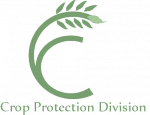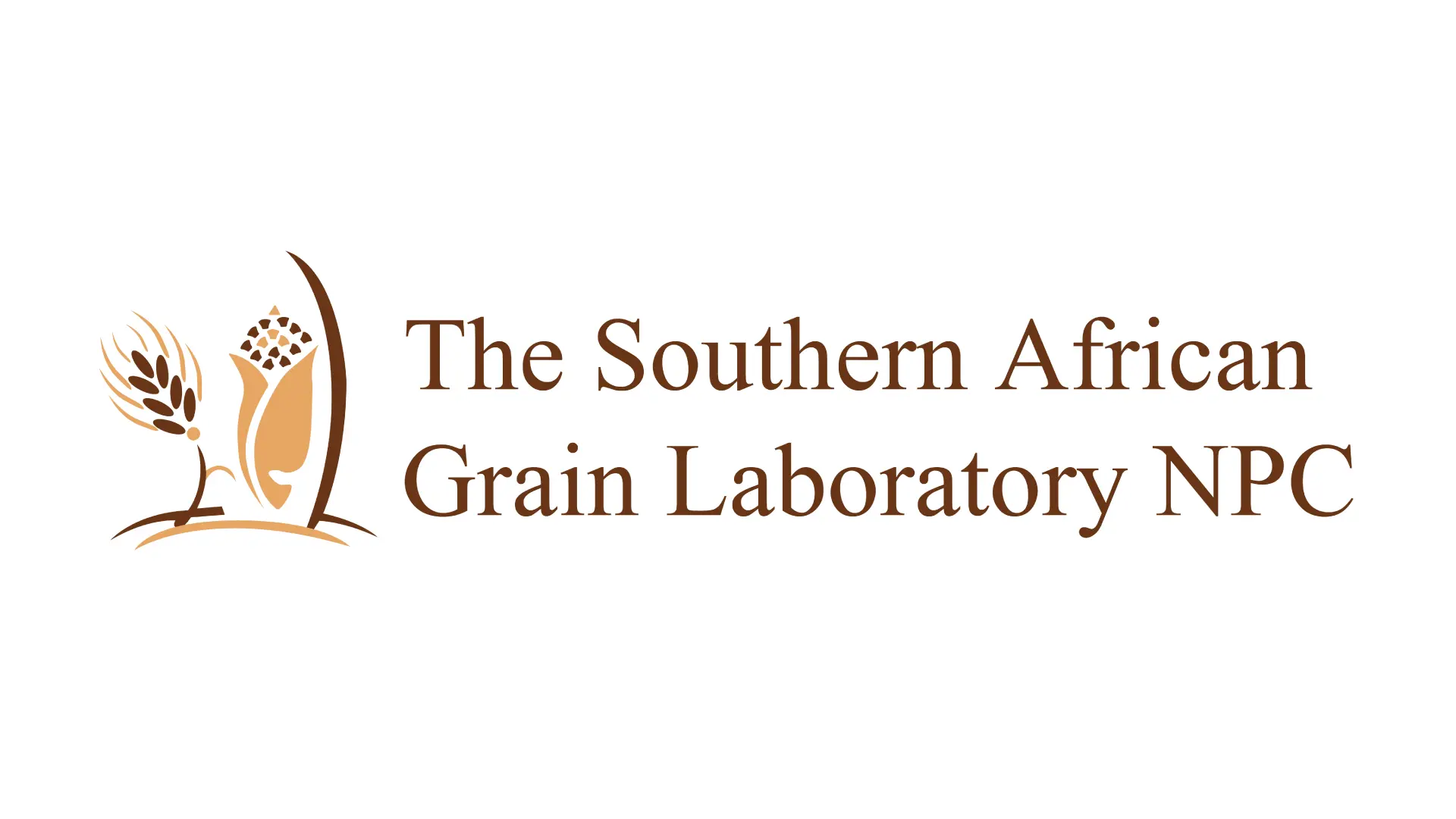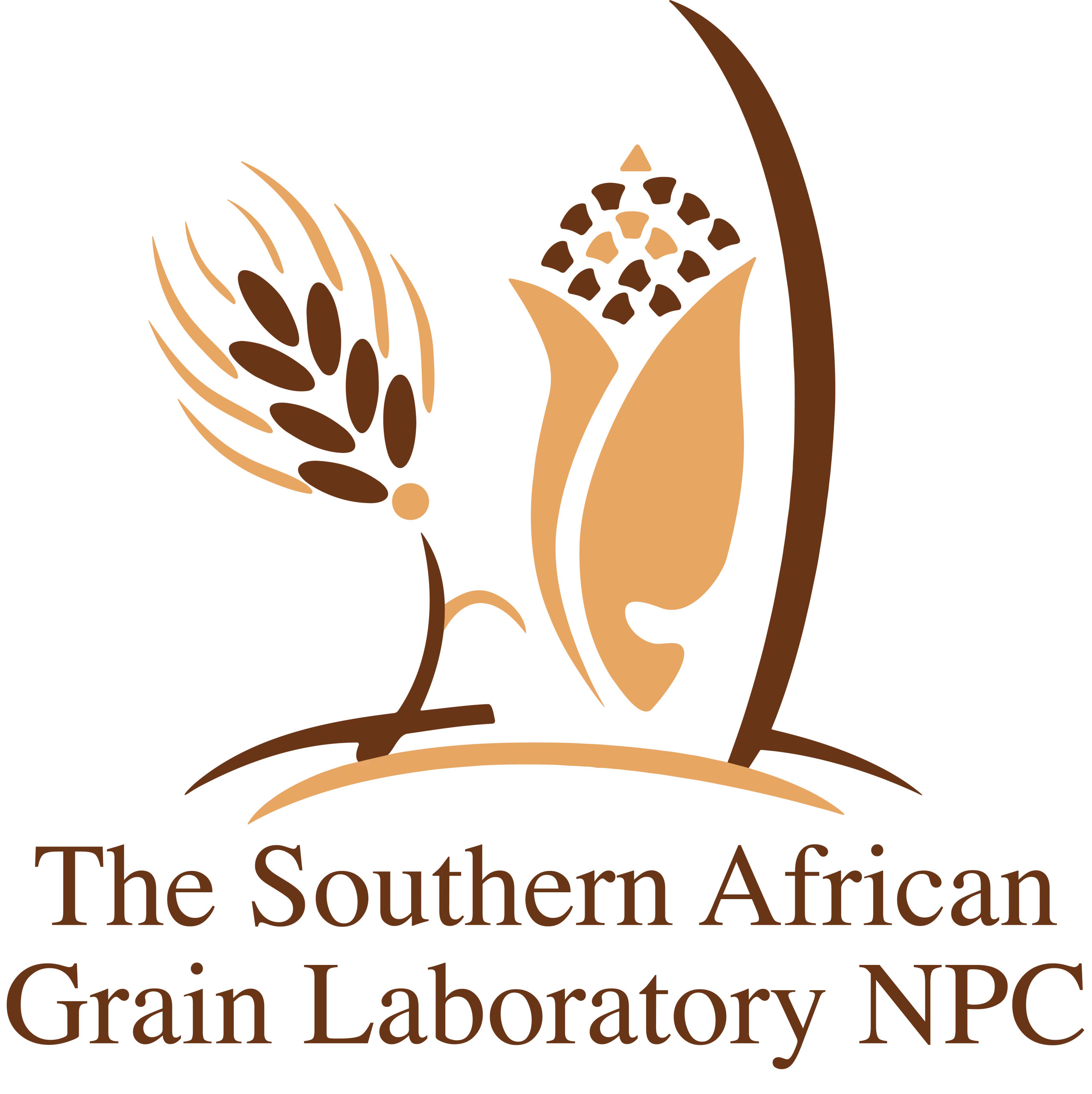The absence of or an incomplete or outdated database when decisions need to be taken, can cause significant problems to the industry. This was the main reason for the Oil and Protein Seeds Development Trust’s decision to fund the annual sunflower crop quality surveys eight years ago. It is, however, imperative to regularly review the scope of analysis included in these surveys to ensure that it meets the needs of the industry. Precision Oil Laboratories, a laboratory that provides testing, training and consultation services to the oil industry, was consulted by a large seed-oil producer in South Africa to determine if an unexpected variation of one of the fatty acids in a sunflower seed batch was acceptable. After extraction of the sunflower oil, it was rejected by a food processing company, indicating that one of the fatty acids was not within their specification.
In the absence of an updated national database for the fatty acid composition of sunflower oil, the Codex Alimentarius was consulted, but it did not accommodate the range of the fatty acid in question. After a literature search, the American database proved that wide ranges for the specific fatty acid were acceptable since certain factors, including drought, could lead to the fatty acid having increased acceptable ranges. The seed containing the fatty acid, which was out of range, was produced during a particularly dry season, explaining the wide range. If a national database were kept and maintained, the time and money lost by the industry as a result of rejected batches could have been avoided. It is important that South Africa, as a sunflower seed producing country, develops and maintains a national fatty acid profile database to the benefit of the oilseeds industry. The inclusion of fatty acid profile analyses from the 2018/19 production season is an important addition to the annual crop quality surveys conducted by the Southern African Grain Laboratory NPC (SAGL).
Building a fatty acid profile database
Fatty acid profiles are the most important tool for identifying the authenticity of vegetable fats and oils. All types of oil have their own specific fatty acid profile, which is a combination of saturated, monounsaturated and polyunsaturated oils and unique to that product/crop. The fatty acid profiles of every crop, however, are subject to variation. The variation or typical pattern of fatty acids in a specific oil not only influences the stability and physical properties of the oil, but also aids in distinguishing one type of oil from another. The variation of fatty acids within the same product depend on climate, latitude, soil type, cultivar, rainfall as well as seasonal variation. These variations should be included when ranges for authenticity identification are determined in order to successfully validate the authenticity of a specific vegetable oil.
Annual analysis of crop and cultivar samples will ensure that the natural variation caused by different cultivars, as well as the influence of climate and locality, are included and reflected in the database values. Seasonal variations will also be addressed. Recording all the variations applicable to the crops in the database, will enable the annual review of the specified ranges. Precision Oil Laboratories was subcontracted to perform fatty acid profile analyses on 20 composite crop samples representing different production regions, as well as 20 cultivar samples from different localities supplied by the ARC Grain Crops. A total of 20 different fatty acids were included in the profile analysis.
Sampling of crops
A total of 176 composite samples representing sunflower seed harvested and delivered to various delivery points throughout the sunflower production regions of South Africa during the second quarter of 2019, were selected to resemble the proportions per province according to the Crop Estimates Committee’s production estimates as closely as possible. A total of 133 (76%) of the samples were graded as Grade FH1 according to the Regulations relating to the grading, packing and marking of sunflower seed intended for sale in the Republic of South Africa (Government Notice No 45 of 22 January 2016). The percentage FH1 samples decreased compared to the 81% of the previous season. In the 2016/17 season, this percentage was 85%. A total of 43 samples were downgraded to ‘Class Other Sunflower Seed’. The main reason for downgrading the samples was as a result of the percentage of either the screenings or the collective deviations, or a combination of both, exceeding the maximum permissible deviations of 4 and 6%, respectively.
Gauteng (three samples) reported the highest weighted average percentage screenings, namely 4,13%, followed by the North West (N = 58) and Mpumalanga (N = 8), both with 2,62%. Limpopo (twelve samples) reported the lowest average percentage screenings, namely 1,47%. The weighted national average was 2,21% compared to the 1,91% of the previous season. The highest weighted average percentage foreign matter (1,36%) was reported on the 95 samples from the Free State.
North West followed closely with an average of 1,34%. The lowest percentages were found in Mpumalanga and Limpopo with 0,85 and 0,71%, respectively. The South African average was 1,28% compared to the 1,16 and 1,06% of the previous two seasons. The number of samples received for this survey that contained sclerotia from the fungus Sclerotinia sclerotiorum, increased from 78 samples (44%) in the previous season to 90 samples (51%) this season. Sixty one of these samples originated in the Free State, 25 in the North West and two each in Mpumalanga and Gauteng. Four of these samples (one from North West, two from the Free State and one from Mpumalanga) exceeded the maximum permissible deviation of 4%. Weighted average levels ranged from 0% in Limpopo to 0,98% in Mpumalanga; the Free State’s weighted average was 0,49%. The national average of 0,43% is the second highest since the 0,53% of the 2013/14 season. Last season’s average was 0,17%.
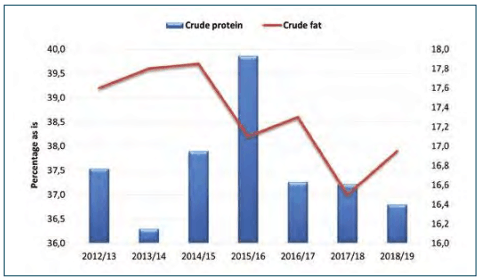
Figure 1: Crude protein and crude fat results of the sunflower crop samples over the last seven seasons.
Nutritional content results
The weighted average crude protein content this season was 16.4% compared to 16,61% the previous season. Limpopo had the highest weighted average crude protein content at 18,3% and Mpumalanga the lowest with 15,41%. Mpumalanga has consistently reported the lowest average protein content since commencement of this survey in the 2012/13 season. The North West’s crude protein content averaged 16,71% and that of the Free State 16,06%. The weighted average crude fat percentage of 37,9% was almost one percent higher than last season’s 37%, but still the second lowest of the last six seasons. Limpopo had the highest weighted average crude fat content at 39%, closely followed by Gauteng with 38,9%. The North West had the lowest average fat content at 37,6% and the province also reported the lowest average in the previous two seasons.
The weighted average percentage crude fibre was the highest of the last seven seasons at 22,4% (21,9% in 2017/18). Average values varied between 20,2% in Limpopo to 23% in the North West. The weighted average ash content was 2,6%, slightly lower than the 2,69% of the previous season. The provincial averages ranged from 2,37% in Mpumalanga to 2,64% in the Free State. The nutritional component analyses are reported as percentage (g/100g) on an as received or as is basis. Table 1 contains a comparison of the moisture, crude protein and crude fat results between the crop survey and ARC Grain Crops sunflower cultivar trial samples. Samples for the current (2019/20) production season are expected to be received by the SAGL from June/July 2020. The results will be available on the SAGL’s website as soon as possible thereafter.
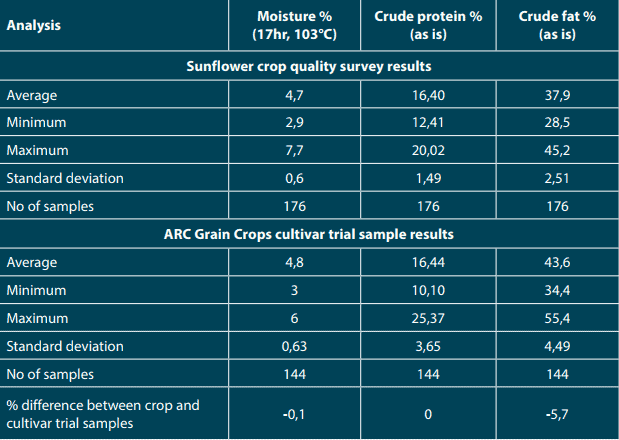
Table 1: Comparison between the moisture, crude protein and crude fat results of the crop quality and ARC cultivar trial samples of the 2018/19 production season
With gratitude to the Oil and Protein Seeds Development Trust for financial support of these annual surveys and to the members of Agbiz Grain for providing the crop samples. For more information, contact the Southern African Grain Laboratory NPC on 012 807 4019 or visit www.sagl.co.za.

